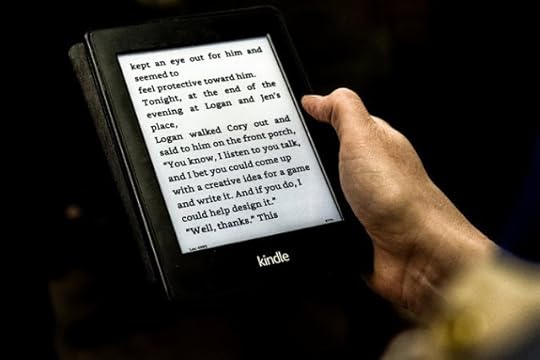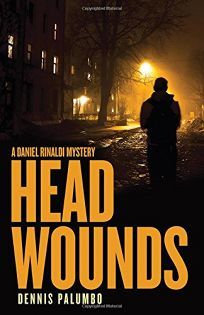Kenneth Atchity's Blog, page 125
January 30, 2018
5 Reasons why we need negative reviews

We all strive for excellence in our work. Sometimes, though, others don't think we measure up. It can be annoying, heartbreaking, or downright infuriating. Others will remind us that not everything is everyone's cup of steeped leaf water, and we'll eventually put down the chocolate, or wine, and get on with our existence.
But could it be we actually need negative reviews? Yes!
Here are five reasons why:
Congratulations! You're real. In the throes of self publishing and sock puppet reviews, it's important to establish a piece of work—and the creator behind it—is honest. One of the surest ways to do this is by receiving negative reviews. Since nothing is universally loved, not even Harry Potter, then a book with only five-star reviews is bound to raise a few eyebrows.
Marketing: You're doing it right. When a book is first born, it usually finds itself passed around from one loving supporter to another. And that's okay. Eventually, though, your baby will have to find its legs and start exploring the world. That means it will be outside the safety of the village, and into the wild. And some things out there will want to have it for breakfast. In short, if your book hasn't garnered a few negative reviews, you haven't sent it out far enough.
Welcome to the classroom. Before publication, a book should have been revised, beta read, and edited. Even with all that, your manuscript likely only saw less than a dozen people. Once out in the world, it—hopefully—will reach hundreds, or even thousands of readers. Among all the voices, some might ring true with thoughts and opinions no one had considered before. Don't dismiss constructive criticism just because it was accompanied by a one-star.
In the words of Picard. Anyone with even the slightest bit of knowledge about a marketing will tell you that word of mouth is the best way to promote anything. This means you need people to talk about the book. Negative reviews often generate conversation among readers. No need to get involved. Just let it run its course. Engaged readers pique curiosity along the way.
It's good for the soul. Praise is nice. If you managed to see a book through from start to finish, you've earned all the bubbly feedback. But even Shakespeare had critics (and now entire classrooms pick his work apart). Sometimes it takes a negative review or two to keep us grounded and, therefore, real to our fans.
No one likes negative reviews. It's okay to be privately hurt or even angry about them. Rant to a friend, take it out on the punching bag, or indulge in a whole gallon of ice cream (not the fat free kind, either). Just keep in mind that in the end, you need negative reviews. They're part of being a real writer.
About the Author:
 Rainy Kaye is an aspiring overlord. In the mean time, she blogs at Rainy of The Dark, and and writes paranormal novels from her lair somewhere in Phoenix, Arizona.
Rainy Kaye is an aspiring overlord. In the mean time, she blogs at Rainy of The Dark, and and writes paranormal novels from her lair somewhere in Phoenix, Arizona. When not plotting world domination, she enjoys getting lost around the globe, studying music so she can sing along with symphonic metal bands, and becoming distracted by Twitter.
She is represented by Rossano Trentin of TZLA.
Originally posted on Book Daily

Published on January 30, 2018 00:00
January 28, 2018
Ageism in Hollywood? by Dennis Palumbo
 Hollywood on the CouchThere's an old joke about a man working in the circus, whose job it was to follow behind the elephants, sweeping up their droppings. When asked why he doesn't find some other line of work, he replies, "What, and leave show business?"
Hollywood on the CouchThere's an old joke about a man working in the circus, whose job it was to follow behind the elephants, sweeping up their droppings. When asked why he doesn't find some other line of work, he replies, "What, and leave show business?"What makes the joke funny, of course, is the truth behind it. Creative and talented people, having once tasted the nectar of Hollywood success, find it almost impossible to quit the field, even when the odds are stacked against them.
And nothing stacks the odds higher than committing the one unpardonable sin in Hollywood---getting older. As the late, great TV writer Larry Gelbart once said, "The only way to beat ageism in Hollywood is to die young."
I ought to know. I deal with issues like ageism in the entertainment industry---not to mention depression, creative "blocks," relationship crises and dozens of other concerns---every day in my therapy practice.
Who am I? I'm a former Hollywood screenwriter (My Favorite Year; Welcome Back, Kotter, etc.), now a licensed psychotherapist in private practice in Los Angeles. And though I've retired from film and TV, I still do some writing---articles, reviews, and, most recently, a new series of mystery novels.
But my full-time day job is my therapy practice. Given my background, I suppose it's no surprise that my patients are primarily writers, actors, and directors in the entertainment industry. They range from the famous and successful to the unknown and struggling. And after over 23 years of doing therapy in Hollywood, I can state one thing with complete confidence:
Doing therapy is the same everywhere. Except here, where it's different.
Which, by way of example, brings me back to ageism.
At 63, my patient Walter (not his real name, of course) has been directing episodic television for most of his adult life---except for the past five years, during which, despite Herculean efforts to get work, he's been unemployed. He also got divorced and lost his house, and had to move to a condo in Burbank.
At a recent session, Walter announced more bad news.
"My agent finally dumped me," he said quietly, without rancor.
"I'm sorry, Walter. I know you've been his client a long time."
"Twenty-one years. Lasted longer than my marriage. And the sex was better..." He managed a rueful smile. "Hey, I can't blame him. He busted his ass for me. But let's face it, nobody wants to see a gray-haired old fart like me on the set. Everybody there looks like my grandchildren."
As is often the case with patients in his situation, we talked about options. Walter agreed that he could probably teach, but that even teaching jobs were getting scarce and the money wasn't very good.
But the money wasn't really what bothered him. Right now, at 63, he felt he was a better director than at any time in his life. He knew his craft, he understood actors, he could keep his head in a crisis. But it seemed clear that nobody wanted to see a face much over 40 or 45 nowadays.
"I might as well pack it in," he said gloomily. "My life in this town is over."
article continues after advertisement
"Your life isn't over, Walter." I said. "Neither is your career. Unless you're ready for it to be over."
"What does that mean?"
"It means you don't have to let other people decide what you can do. Or how to feel about what you can do."
"Hell, don't get all therapeutic on me now."
"I'm not. I'm being pragmatic. If you want to teach, go teach. But if you still love directing, go find something to direct. A play. A short film. You say you have a few bucks. Okay, then hire someone to write something. Or rent a small theater downtown and put something up on its feet."
"Forget it. I'm used to working for studios. Networks. Guys with parking spaces on the lot, who at least have to pay me for the privilege of pissing all over my work."
"And I know how much you'll miss that. But at least you'll be directing. If that's what you still want to do."
"Hell, it's what I am."
He sat back, stroking the edge of his trim, salt-and-pepper beard. Then he laughed. "Hey," he said, "remember that joke about the guy at the circus, cleaning up after the elephants?"
"One of my favorites."
"You think I'm that guy?"
article continues after advertisement
"Walter, I think we're all that guy. These are the lives we lead, the things we do. If it's who we really are, all we can do is keep doing it. As a colleague of mine said once, about trying to achieve in any profession: Keep giving them you, until you is what they want."
He paused. "You know, Alvin Sergeant is in his 70's or 80's, and he wrote those first Spider-Man movies. Huge hits. For years, David Chase couldn't get arrested, and then he creates The Sopranos. Hell, John Huston directed his last picture in a wheelchair, sitting next to an oxygen tank."
"All true."
"I mean, maybe I'm just kiddin' myself, but..." He nodded toward the door. "There's gotta be at least one more elephant out there, right?"
I smiled. "I've never known a circus without one."
Dennis Palumbo is a former Hollywood screenwriter (My Favorite Year; Welcome Back, Kotter) turned licensed psychotherapist and mystery author.

Published on January 28, 2018 00:00
January 26, 2018
How Technology Is (and Isn’t) Changing Our Reading Habits
 When Alexandra Alter, a reporter who covers the books industry, doesn’t want to lose herself in what she’s reading, or lose her balance on the subway, she reaches for her Kindle. Credit Jeenah Moon for The New York Times
When Alexandra Alter, a reporter who covers the books industry, doesn’t want to lose herself in what she’s reading, or lose her balance on the subway, she reaches for her Kindle. Credit Jeenah Moon for The New York Times How do New York Times journalists use technology in their jobs and in their personal lives? Alexandra Alter, who covers the books industry for The Times, discussed the tech she’s using.
Given that you write about the books industry, how do you prefer to read books? On a Kindle or iPad or some other device, or printed books?
I came a little late to e-books, but I became a convert in 2010 when my older daughter was born. I needed a way to read books with one hand (and in a dark room), so I got a Kindle. The Kindle and ice cream sandwiches — also easily managed with one hand — are what got me through the brutal early weeks with a newborn, when you basically can’t put them down. Now I’m on my fifth Kindle.
I still love print books and find it to be a much more relaxing and immersive experience, but when I’m reading books for work — honestly, the bulk of my reading — the Kindle is incredibly convenient. I have all my books on a single device that I always have with me. I read advance copies of books that way: Publishers send me digital copies through NetGalley or Edelweiss, sites where book industry professionals and critics can get digital copies of books before they’re published.
I like that e-books are searchable, which is helpful for fact-checking, and the device stores all my notes and highlights, so I can quickly look stuff up when I’m writing. And I can read with one hand on a crowded train. One of my mild phobias is being trapped somewhere, on a plane or a stalled train or in a line, with nothing to read, and I also have the Kindle reader app on my iPhone, so I always have my entire library with me.
How is technology affecting the publishing industry?
About a decade ago, when Amazon introduced its first e-reader, publishers panicked that digital books would take over the industry, the way digital transformed the music industry. And for a while, that fear seemed totally justified. At one point, the growth trajectory for e-books was more than 1,200 percent. Bookstores suffered, and print sales lagged. E-books also made self-publishing easier, which threatened traditional publishers.
But in just the last couple of years, there has been a surprising reversal. Print is holding steady — even increasing — and e-book sales have slipped.
One possible reason is that e-book prices have gone up, so in some cases they’re more expensive than a paperback edition. Another possibility is digital fatigue. People spend so much time in front of screens that when they read they want to be offline. Another theory is that some e-book readers have switched to audiobooks, which are easy to play on your smartphone while you’re multitasking. And audiobooks have become the fastest-growing format in the industry.

Ms. Alter likes that e-books are searchable and that the the Kindle stores her notes and highlights for easy retrieval. Credit Jeenah Moon for The New York Times
Social media has also had an enormous impact on publishing, as it has on all corners of the media industry. It has definitely become a new way for readers to connect with authors and discover books, but it has probably also cut into the time that people spend reading. (A depressing article in Quartz estimated that if people spent the same amount of time reading that they did on social media, they could read 200 books a year easily.)
Many new authors are skipping traditional publishers and use tech tools to go straight to self-publishing their own e-books or print books. What will be the fate of traditional publishers in the next few years?
Self-publishing has been one of the most fascinating corners of the industry to me. There have been a handful of massively successful self-published authors who have started their own publishing companies, and they’ve started to publish other “self-published” authors. But publishers have survived so far through consolidation, and we’ll probably see more of that.
Read more

Published on January 26, 2018 00:00
January 24, 2018
What Makes Something Go Viral?
What's the secret to making content people love? Join BuzzFeed's Publisher Dao Nguyen for a glimpse at how her team creates their tempting quizzes, lists and videos -- and learn more about how they've developed a system to understand how people use content to connect and create culture.


Published on January 24, 2018 00:00
January 22, 2018
'The Meg': Jason Statham And Cast Assemble In New Photo
Warner Bros. has released a new look at The Meg, the action-slash-horror that will pit The Fate of the Furious star Jason Statham against a 75-foot-long Carcharodon megalodon.

The photo sees Statham's Jonas Taylor take center alongside cast members Page Kennedy (DJ), Ruby Rose (Jaxx Herd), Li Bingbing (Suyin), and Cliff Curtis (James 'Mac' Mackreides).
Rainn Wilson (The Office), Robert Taylor (Kong: Skull Island), Masi Oka (Death Note), and Jessica McNamee (Battle of the Sexes) co-star.
Based on author Steve Alten's 1997 novel Meg: A Novel of Deep Terror, The Meg sees a deep-sea submersible attacked by a massive creature that was previously believed to be extinct.
With its crew trapped inside as the submersible lies disabled at the bottom of the deepest trench in the Pacific, expert deep-sea rescue diver Taylor is recruited by visionary Chinese ocreanographer Dr. Minway Zhang (Winston Chao) to save the crew — and the ocean itself — from the unstoppable over-sized shark.
Taylor, who encountered the terrifying creature years before, will team with Suyin and must confront his fears to save everyone trapped below — bringing him face to face once more with the greatest and largest predator of all time.
Jon Turteltaub (National Treasure) directs from a script by Erich and Jon Hoeber (Battleship).
The Meg has been in the works since Disney purchased the rights in 1997.
Warner Bros. revived the project in 2015, eyeing Hostel and Knock Knock filmmaker Eli Roth to direct. Turteltaub boarded in 2016, originally prepping The Meg for a March 2018 debut.
The Meg swims into theaters August 10.
Read more


The photo sees Statham's Jonas Taylor take center alongside cast members Page Kennedy (DJ), Ruby Rose (Jaxx Herd), Li Bingbing (Suyin), and Cliff Curtis (James 'Mac' Mackreides).
Rainn Wilson (The Office), Robert Taylor (Kong: Skull Island), Masi Oka (Death Note), and Jessica McNamee (Battle of the Sexes) co-star.
Based on author Steve Alten's 1997 novel Meg: A Novel of Deep Terror, The Meg sees a deep-sea submersible attacked by a massive creature that was previously believed to be extinct.
With its crew trapped inside as the submersible lies disabled at the bottom of the deepest trench in the Pacific, expert deep-sea rescue diver Taylor is recruited by visionary Chinese ocreanographer Dr. Minway Zhang (Winston Chao) to save the crew — and the ocean itself — from the unstoppable over-sized shark.
Taylor, who encountered the terrifying creature years before, will team with Suyin and must confront his fears to save everyone trapped below — bringing him face to face once more with the greatest and largest predator of all time.
Jon Turteltaub (National Treasure) directs from a script by Erich and Jon Hoeber (Battleship).
The Meg has been in the works since Disney purchased the rights in 1997.
Warner Bros. revived the project in 2015, eyeing Hostel and Knock Knock filmmaker Eli Roth to direct. Turteltaub boarded in 2016, originally prepping The Meg for a March 2018 debut.
The Meg swims into theaters August 10.
Read more

Published on January 22, 2018 09:06
January 19, 2018
Why Do You Have to Market Your Book? 10 Ways to Focus Your Marketing

Your book is about to be published or already published, and now it's time to talk about the simple facts of marketing. The American marketplace, nearly 300 million strong, is the most lucrative market for books in the world -- and the gateway to the global marketplace. Amazon now has websites in United Kingdom, Spain, France, Germany, Italy, Australia, Japan, Canada, Mexico, and Brazil -- and is adding more each year. Your book's reach can truly be global -- if your book is visible.
One book in a million launches to instant sales while the author does absolutely nothing. It's the most common pathetic fallacy to think you'll succeed without PR or that the media will cover your book with little effort on your part.
The other 999,999 books require the marketing (promotional) efforts to become visible to the American and global marketplace. And marketing is an ongoing thing that never stops.
To begin with, you need to know this formula by heart:
MARKETING has no direct relationship with sales.
But GOOD MARKETING produces VISIBILITY.
Without VISIBILITY there can be no sales.
Consider BMW, Veuve Clicquot, Victoria's Secret, and many other brands that are embedded in the American consciousness. They well know that spending millions of dollars a year in the big slick magazines with sexy ads has NO direct relationship with sales. But they do it because it keeps their brands in the forefront of the browsers' awareness.
They don't dare NOT spend the money. For one thing, they know if they don't spend it, someone else will be spending it and that someone else may take their place in the buyers' awareness.
The same is true of the massively crowded world of books.
So one way or the other, you must MARKET YOUR BOOK as fervently as -- maybe even more fervently than -- you wrote it. Devote a minimum amount of time EACH DAY because time upon time produces results.
What are some of the best ways to market your book? From years of trials and errors, both my own and those of my clients and published authors, here's what I suggest:
1. Come up with a marketing plan that fits your time and budget constraints; revise it as you continue forward and as opportunities arise.
2. Put time into it, and as much money as you can spare. Nothing happens unless you invest your time and/or your money (and don't forget: money buys time).
3. Get help. If you don't have the time or desire to do it yourself, use our help to make your book visible.
4. Forget about all marketing except the internet. By 2012, 274 million (78.6% of the population) people were using the internet in North America alone; 2.95 billion are online worldwide! Why spend your money on television, or print ads, or even radio (though the last is still a good idea) when you can be in direct touch with this humongous market from your keyboard?
5. Focus your book by offering it exclusive on amazon.com--which has over 100 million subscribers. Get that "Author Central" page up as soon as your book is launched. Amazon is the 500-lb guerrilla -- so set the other monkeys aside until you've sold 100 million books.
6. Build a Facebook page instead of a blog. With 1.3 Billion users globally, where can you find a better marketplace? Maybe you'll consider that limiting when your book has sold a billion copies. Then you can think about expanding beyond Facebook. Meanwhile here's the biggest market imaginable -- nearly 200 million in North America -- right at your fingertips.
7. Focus on getting book reviews on your sell-page. First aim for 30, then 100, then 300. Magic happens when the amazon computer's algorithm starts paying attention to your book, and more and more reviews inevitably make that happen.
8. end out a press release about your book through a service that reaches internet reviewers. You will surely receive requests for review copies -- and at least half of those will end up as reviews on the internet.
9. Social networking is where it's all happening today: Facebook, twitter, Pinterest, Linked-In, YouTube, and Tumblr. Set up accounts and send out postings regularly until you grow your following, capturing their emails so you can keep in touch with them.
10. Experiment as much as you have time and funds for, but double down on anything that's working for you.
Don't be overwhelmed by the marketing process. Take control of it by limiting it to a specific time allotment each day, say 60 minutes. You'll be amazed at the results sixty minutes a day, day in and day out, will produce. Good luck -- and enjoy the excitement of this new frontier for writers, where you can reach out directly to your readers and prospective readers.

Published on January 19, 2018 00:00
January 17, 2018
Publishers Weekly Reviews Dennis Palumbo's Head Wounds

 Head Wounds: A Daniel Rinaldi Mystery
Head Wounds: A Daniel Rinaldi MysteryDennis Palumbo. Poisoned Pen
The violence starts early in Palumbo’s engrossing fifth mystery (after 2014’s Phantom Limb) featuring clinical psychologist Daniel Rinaldi, who consults for the Pittsburgh PD. Daniel is at home reviewing the file of the unsolved murder of his wife, Barbara, when someone takes a shot at him through his living-room window. Soon afterward, the police apprehend the shooter, Eddie Burke, the drunk, disaffected boyfriend of Daniel’s attractive, well-to-do neighbor, Joy Steadman. Daniel does his best to comfort Joy, but when he returns to her house to check on her hours later, he finds her strangled body. He eventually learns that Joy told Eddie that she was sleeping with him, hence Eddie’s rage. The police suspect Daniel in Joy’s murder. Meanwhile, a computer-savvy psychopath sets out to torment Daniel by killing or maiming an ever-widening group of his patients, friends, and family members. The tension rises as Daniel uses his understanding of the human psyche to play a deadly game of cat-and-mouse with his nemesis. Palumbo, a licensed psychotherapist, has delivered another well-crafted page-turner. (Feb.)
Buy this book

Published on January 17, 2018 00:00
January 15, 2018
The Joy of Less By Pico Iyer

“The beat of my heart has grown deeper, more active, and yet more peaceful, and it is as if I were all the time storing up inner riches…My [life] is one long sequence of inner miracles.” The young Dutchwoman Etty Hillesum wrote that in a Nazi transit camp in 1943, on her way to her death at Auschwitz two months later. Towards the end of his life, Ralph Waldo Emerson wrote, “All I have seen teaches me to trust the creator for all I have not seen,” though by then he had already lost his father when he was 7, his first wife when she was 20 and his first son, aged 5. In Japan, the late 18th-century poet Issa is celebrated for his delighted, almost child-like celebrations of the natural world. Issa saw four children die in infancy, his wife die in childbirth, and his own body partially paralyzed.
In the corporate world, I always knew there was some higher position I could attain, which meant that, like Zeno’s arrow, I was guaranteed never to arrive and always to remain dissatisfied.I’m not sure I knew the details of all these lives when I was 29, but I did begin to guess that happiness lies less in our circumstances than in what we make of them, in every sense. “There is nothing either good or bad,” I had heard in high school, from Hamlet, “but thinking makes it so.” I had been lucky enough at that point to stumble into the life I might have dreamed of as a boy: a great job writing on world affairs for Time magazine, an apartment (officially at least) on Park Avenue, enough time and money to take vacations in Burma, Morocco, El Salvador. But every time I went to one of those places, I noticed that the people I met there, mired in difficulty and often warfare, seemed to have more energy and even optimism than the friends I’d grown up with in privileged, peaceful Santa Barbara, Calif., many of whom were on their fourth marriages and seeing a therapist every day. Though I knew that poverty certainly didn’t buy happiness, I wasn’t convinced that money did either.
So — as post-1960s cliché decreed — I left my comfortable job and life to live for a year in a temple on the backstreets of Kyoto. My high-minded year lasted all of a week, by which time I’d noticed that the depthless contemplation of the moon and composition of haiku I’d imagined from afar was really more a matter of cleaning, sweeping and then cleaning some more. But today, more than 21 years later, I still live in the vicinity of Kyoto, in a two-room apartment that makes my old monastic cell look almost luxurious by comparison. I have no bicycle, no car, no television I can understand, no media — and the days seem to stretch into eternities, and I can’t think of a single thing I lack.
I’m no Buddhist monk, and I can’t say I’m in love with renunciation in itself, or traveling an hour or more to print out an article I’ve written, or missing out on the N.B.A. Finals. But at some point, I decided that, for me at least, happiness arose out of all I didn’t want or need, not all I did. And it seemed quite useful to take a clear, hard look at what really led to peace of mind or absorption (the closest I’ve come to understanding happiness). Not having a car gives me volumes not to think or worry about, and makes walks around the neighborhood a daily adventure. Lacking a cell phone and high-speed Internet, I have time to play ping-pong every evening, to write long letters to old friends and to go shopping for my sweetheart (or to track down old baubles for two kids who are now out in the world).
When the phone does ring — once a week — I’m thrilled, as I never was when the phone rang in my overcrowded office in Rockefeller Center. And when I return to the United States every three months or so and pick up a newspaper, I find I haven’t missed much at all. While I’ve been rereading P.G. Wodehouse, or “Walden,” the crazily accelerating roller-coaster of the 24/7 news cycle has propelled people up and down and down and up and then left them pretty much where they started. “I call that man rich,” Henry James’s Ralph Touchett observes in “Portrait of a Lady,” “who can satisfy the requirements of his imagination.” Living in the future tense never did that for me.
Perhaps happiness, like peace or passion, comes most when it isn’t pursued.I certainly wouldn’t recommend my life to most people — and my heart goes out to those who have recently been condemned to a simplicity they never needed or wanted. But I’m not sure how much outward details or accomplishments ever really make us happy deep down. The millionaires I know seem desperate to become multimillionaires, and spend more time with their lawyers and their bankers than with their friends (whose motivations they are no longer sure of). And I remember how, in the corporate world, I always knew there was some higher position I could attain, which meant that, like Zeno’s arrow, I was guaranteed never to arrive and always to remain dissatisfied.
Being self-employed will always make for a precarious life; these days, it is more uncertain than ever, especially since my tools of choice, written words, are coming to seem like accessories to images. Like almost everyone I know, I’ve lost much of my savings in the past few months. I even went through a dress-rehearsal for our enforced austerity when my family home in Santa Barbara burned to the ground some years ago, leaving me with nothing but the toothbrush I bought from an all-night supermarket that night. And yet my two-room apartment in nowhere Japan seems more abundant than the big house that burned down. I have time to read the new John le Carre, while nibbling at sweet tangerines in the sun. When a Sigur Ros album comes out, it fills my days and nights, resplendent. And then it seems that happiness, like peace or passion, comes most freely when it isn’t pursued.
If you’re the kind of person who prefers freedom to security, who feels more comfortable in a small room than a large one and who finds that happiness comes from matching your wants to your needs, then running to stand still isn’t where your joy lies. In New York, a part of me was always somewhere else, thinking of what a simple life in Japan might be like. Now I’m there, I find that I almost never think of Rockefeller Center or Park Avenue at all.
Read more
 Pico Iyer’s most recent book, “The Open Road: The Global Journey of the Fourteenth Dalai Lama,” is just out in paperback.
Pico Iyer’s most recent book, “The Open Road: The Global Journey of the Fourteenth Dalai Lama,” is just out in paperback.
Published on January 15, 2018 00:00
January 11, 2018
Silence Her by Douglas Feterly Review
5.0 out of 5 stars By Samfreeneon
Silence Her by Douglas Fetterly

Exposes are not something foreign to reporter Lishan Amir as her goal is to take down Senator Libby and his cohort Jack Conner wanting to take down not only these two but anyone attached to them too. Dealing with her boss, executive editor Jerry Hanson the roadblocks, danger, threats she faces will make you wonder why she persisted when everyone around her just wanted to permanently Silence Her. Lishan is brash, hardnosed and will stop at nothing to take down Jack Conner and his company. False labeling on products is at the heart of this novel as we learn much about the FDA who they are really concerned about protecting and why one man was able to have products so readily available to the public even though some proved deadly.
Kickback, fraud, toxic fillers and empty calories are just part of what Conner delivers to the unsuspecting public and what we as consumers need to be more vigilant about reading labels and understanding that there are different names for trans fats and other harmful ingredients in our foods. When Conner learns more about Lishan it becomes an all out war. With the aid of her friend Erik she learns more as Lishan finds herself in the presence of Conner, Libby and the FDA commissioner and Nathaniel Ferrali, the U.S. Attorney for the District of Columbia plus her boss Jerry Hanson all at the same party yet Lishan tried to make herself inconspicuous. Saved by her friend JoJO a scientist friend with the FDA and performer at night she has him and several other allies that will work to help her uncover what she hopes will bring Conner and his team down. Plus a strong support in Howard Perkins.
Dr. Arthur Schuler is the FDA commissioner who spoke the audience present at this gathering promising and stating that he ensured public safety: FDA’s Determination of Obesity Relative to Artificial Sweeteners and the questions focused on a specific theme about the correlation between artificial sweeteners and the rise of obesity in the United States and the impact of Aspartame-like sweetener Connulose that Conner foods introduced. You can hear the discussion and the arguments on pages 18-21. Lishan was then attacked and saved by someone named Osiris while walking to her officer. The author explains why the FDA in this case seems to be skirting around protecting the public and is more concerned with those in industry as Lishan’s life is in danger and she is attacked many times and the people she thinks she can trust are not what they appear to be.
She is relentless and won’t stop at anything and her liaisons with many men that she encounters prove at times to be dangerous and wrong choices. Her impulsiveness gets her in trouble at work and her confrontational attitude brings her to the attention of the higher ups at the paper causing them to delve into her past.
JoJo is a molecular scientist and his input and knowledge are invaluable as you come to know him better. People risking their lives for Lishan are many but even so at times she seems to take them fore granted. Labeling on foods can be misleading and the FDA mainly CFSAN allows mislabeling. Two cases sited by the author in this novel deal with MSG which causes from personal experience I know migraines and headaches and producers of foods are allowed to put a zero trans fats on the front of the package, when in fact as you will learn when delving deeper into this novel and what is present, the Principal Display Panel, with its net quantity of contents and ingredients indicates the presence of HYBROGENATED OILS aka/TRANS FATS! The speaker continues with quotes from their own FDA documents and one from a budget file. Dealing with the front labeling of a product few people check and should check the nutritional facts label on the information panel of foods on the back side of the product. However, this person claims that the FDA is charged with ensuring honesty and truth in the labeling it supports and mandates that the transgressions he mentioned need to be addressed because the health and welfare of the public is at stake. On pages 124-128 the author reveals more information about how the company is concerned with stockholders as a PI named Beck is speaking to Lishan and how the commissioner of the agency and the faction of the Agency sides with what some call good ol boys. More cases are sited about the FDA more reviews and Conner Foods seems the most likely culprit as products are put on the market and toxic substances are present and people get deathly ill or die and Conner claims that’s not true. Then Lishan receives a box of cupcakes and one of the people in the newsroom’s daughter takes one and winds up deathly ill and might not survive. Guilt wears at Lishan as she tells her story to her Aunt Niesha who has some powerful connections and realizing that the cupcakes were poisoned and probably sent by some on Conner’s payroll if not him.
Every step of the way Lishan meets and has to overcome many obstacles. Dealing with someone named Raphael she falls into his trap and his main reason for wanting to see her is revenge for how she treated him in the past. Erik seems to have found someone else and Lishan falls apart when the PI working to help her is killed and then she contacts one of Conner’s henchman and he winds up the same way when she’s supposed to meet with him.
Going undercover, disguises, putting people in danger and changing her appearance, Lishan and her team her aunt, Maya and at times Erik hope to find the credible documentation and proof to take down this powerful man. But, wandering the streets, not being careful about a cab she went into, Lishan might find herself to be another victim.
The cafeteria at Factory 17 was included in experimental fat used in the cafeteria. Conner Foods’ factories decided to test the fats by using employees as subjects and some get sick others died. Conner could care less. Howard Wiggins is her source and stating that someone like Conner who’s considered an industrial giant states that its new drug reduces blood pressure and it does that’s enough to satisfy at least the primary entry requirement onto the list of approved drugs. Side effects get less notice and press and at a minimum and this is scary as most people forget to check out these side effects before even considering taking certain drugs can be a fatal mistake. Some cause heart attacks, others blood clots or worse and many of these drugs pass muster but the client is not the public it’s the industry. But, Lishan is relentless and finds someone named Fatima to help her and talk about Factory 17 but will she and what if anything will she learn that might help her? Mazzini is someone she contacts who is close to Conner but just talking to her seals his fate. Conner has eyes all over. Mazzini is a risk but her aunt wanted him alive and things get even more out of control as Lishan becomes more of a target. Maya and her aunt Niesha are her two support systems as Maya’s office was in the United States Attorney’s office building and her title was Criminal Justice Chief her aunt was even more powerful. A visit to interview a prisoner named Alan Frazier is enlightening and the ending just might end it all for Lishan as she is held captive by someone working for Conner and the end result could mean her life and the end of the case. When the final headline comes out what will it read: Conner is arrested and charged or Lishan is another victim? Who’s straight and whose paid off and who wins at the end? A novel that will make readers think twice before trying foods that are mislabeled, foods with sugars that have pen names other than sugar, trans fats with false names and realize that the FDA approval needs to really target protecting consumers.
A young reporter that puts it all on the line and risks the lives of so many to make a point and take down a giant in industry that seems to be so far above the law that he might skate. Lishan is tough, outspoken, takes risks, impulsive but in the end will this do her in. A ending you won’t see coming and a young girl that is outspoken, passionate but most others just want to take her down for good and SILENCE HER! Consumer beware! Read your labels and know what goes into your body as author Douglas Fetterly succeeds in giving readers much more than food for thought!

Published on January 11, 2018 00:00
January 10, 2018
Check out Dennis Palumbo's latest essay in Suspense Magazine!
Published on January 10, 2018 12:04




